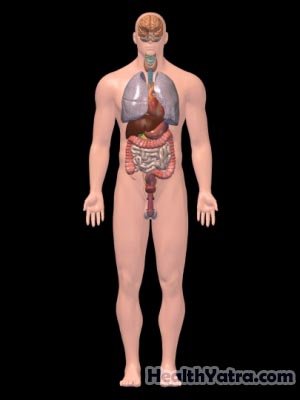Definition
An autopsy is a surgical procedure to examine the body and its internal organs after death.
Reasons for Procedure
An autopsy is not done after every death. An autopsy may be done at the request of the family or doctor. Reasons for autopsy include:
- To answer questions about the health (prior to death) of the deceased
- To determine the exact cause of death
- To resolve legal or medical concerns
Possible Complications
Autopsies may not be able to provide exact answers on cause of death.
What to Expect
Prior to Procedure
Before an autopsy, there must be positive identification of the body. An autopsy permit must be signed by the legal next-of-kin. The body is transported to the morgue and held in a refrigeration unit until the autopsy.
Description of the Procedure
Autopsies follow this general procedure:
- External examination—The body is measured. Any abnormality of the body surface is recorded.
- Opening the body:
- A Y-shaped cut is made in the skin. It starts at the front of each shoulder and goes around the navel and down to the pubic bone. The skin, muscle, and soft tissues are separated from the chest wall.
- Each side of the rib cage is cut with an electric saw to provide access to the heart and lungs.
- The abdominal muscle is removed to expose the abdominal organs.

- Organ removal — Using special techniques, the organs are cut and removed from the body. All organs (heart, lungs, liver, intestines, stomach, pancreas, kidneys, spleen, and pelvic organs) and the major arteries are examined individually. They are weighed, washed, and dissected as necessary. Some tissue samples may be removed for further lab examination.
- Brain removal—A deep cut is made into the scalp. The incision runs from behind one ear, over the crown of the head, to behind the other ear. Skin and soft tissues are peeled down across the face in the front to the nape of the neck in the back. An electric saw is used to cut through the skull. The brain is lifted and placed in a preserving solution for two weeks. This makes it firmer and easier to handle.
The body is sewn back together after the autopsy is complete. Procedures vary regarding organ replacement. Dissected organs may be returned to the body or incinerated. If the organs are not returned to the body, the mortician will put filler in the body cavity to retain the body’s shape.
Immediately After Procedure
Tissue samples may be sent to a lab for analysis. Results are available within a few weeks. A final autopsy report is usually completed in 30 to 60 days.
How Long Will It Take?
The autopsy typically takes 2-4 hours, depending on the reason and level of complexity.
Getting Autopsy Results
Contact your local Medical Examiner’s office on how to request an autopsy report.
